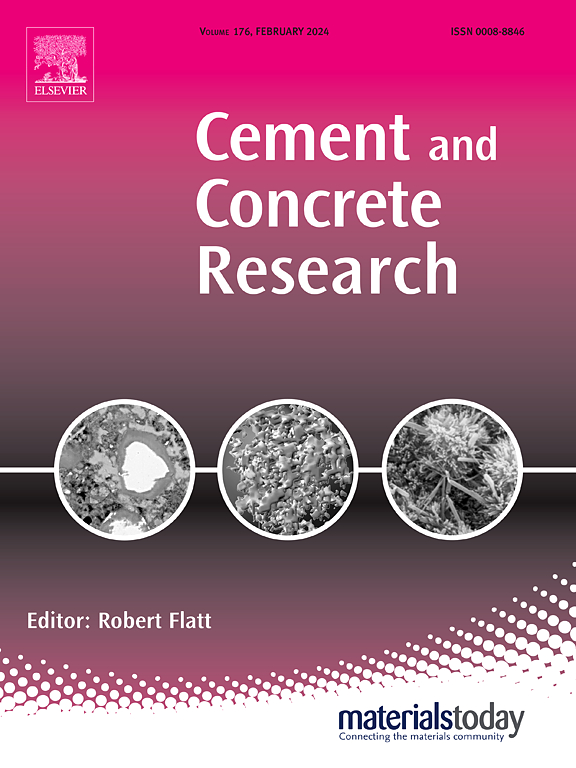A unified pore structure-based model for diffusion coefficient of unsaturated cementitious materials
IF 13.1
1区 工程技术
Q1 CONSTRUCTION & BUILDING TECHNOLOGY
引用次数: 0
Abstract
The diffusion coefficient of unsaturated cementitious materials is a crucial factor in assessing their transport-related properties for durability evaluation. However, predicting the diffusion coefficient of unsaturated cementitious media through mathematical modeling is challenging due to the variability of fitting parameters in existing models. This work explores the impact of pore structure and hydration product composition on the diffusion coefficient and corrosion of steel in cementitious materials, particularly under an unsaturated state. The findings reveal that there is no substantial difference in the diffusion mechanisms between saturated and unsaturated cementitious materials, once the roles of capillary and gel liquids are distinguished. Therefore, the same Archie's equation, with consistent fitting parameters, can be used to determine the diffusion coefficient of both saturated and unsaturated cementitious materials. The variability of fitting parameters in the saturation function primarily arises from the varying percentage of capillary pores in different cementitious microstructures. Additionally, the new unified pore structure-based model of diffusion coefficient can be used to accurately predict the corrosion rate of steel embedded in unsaturated cementitious materials.
基于孔隙结构的非饱和胶凝材料扩散系数统一模型
非饱和胶凝材料的扩散系数是评价其耐久性的关键因素。然而,由于现有模型拟合参数的可变性,通过数学模型预测非饱和胶凝介质的扩散系数是具有挑战性的。本工作探讨了孔隙结构和水化产物组成对水泥材料中钢的扩散系数和腐蚀的影响,特别是在非饱和状态下。研究结果表明,一旦区分毛细液和凝胶液的作用,饱和和非饱和胶凝材料之间的扩散机制没有实质性差异。因此,在拟合参数一致的情况下,可以使用相同的Archie’s方程来确定饱和和非饱和胶凝材料的扩散系数。饱和函数拟合参数的变化主要是由于不同胶凝微结构中毛细孔的百分比不同。此外,基于统一孔隙结构的扩散系数模型可以准确预测钢在非饱和胶凝材料中的腐蚀速率。
本文章由计算机程序翻译,如有差异,请以英文原文为准。
求助全文
约1分钟内获得全文
求助全文
来源期刊

Cement and Concrete Research
工程技术-材料科学:综合
CiteScore
20.90
自引率
12.30%
发文量
318
审稿时长
53 days
期刊介绍:
Cement and Concrete Research is dedicated to publishing top-notch research on the materials science and engineering of cement, cement composites, mortars, concrete, and related materials incorporating cement or other mineral binders. The journal prioritizes reporting significant findings in research on the properties and performance of cementitious materials. It also covers novel experimental techniques, the latest analytical and modeling methods, examination and diagnosis of actual cement and concrete structures, and the exploration of potential improvements in materials.
 求助内容:
求助内容: 应助结果提醒方式:
应助结果提醒方式:


